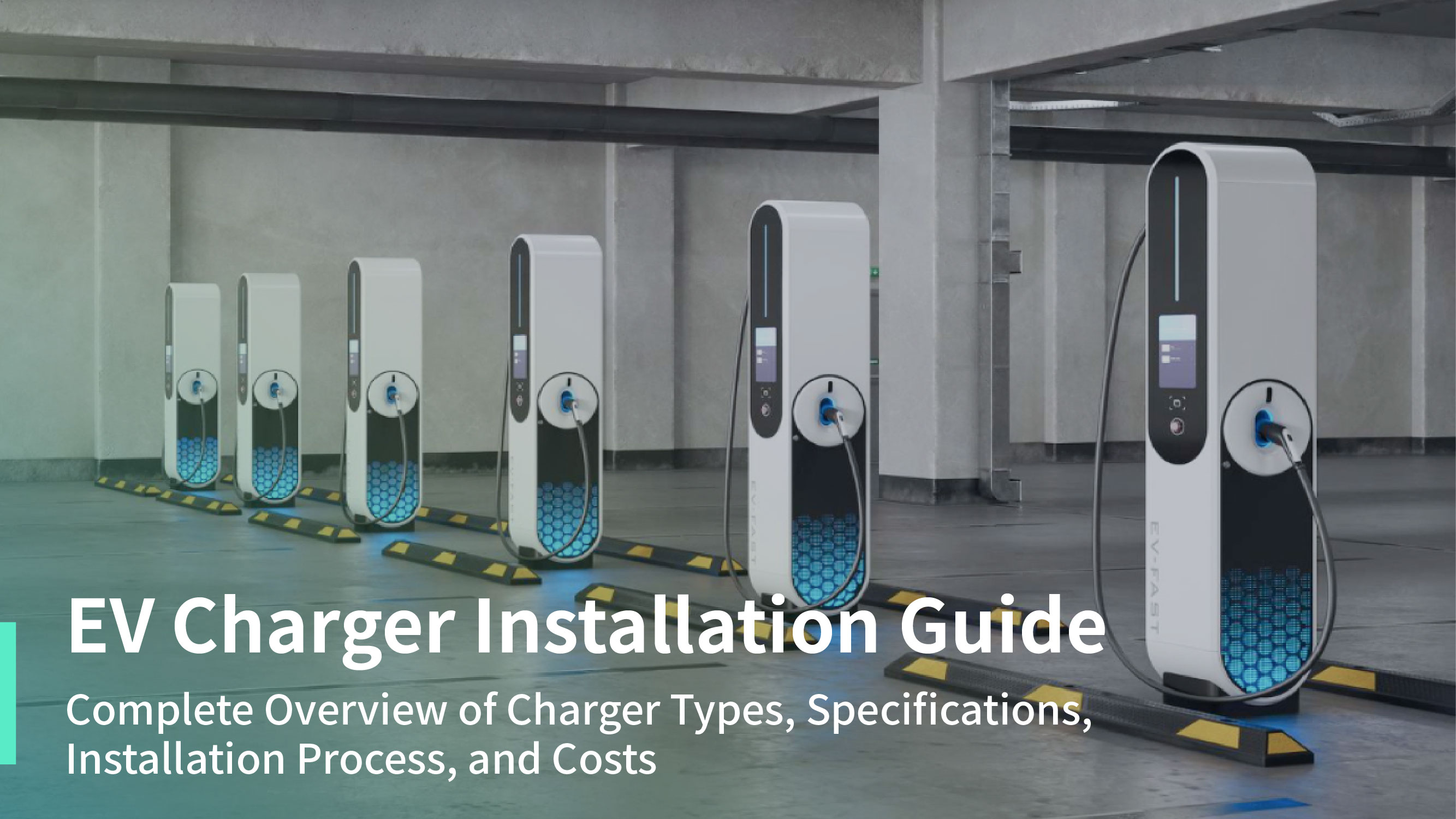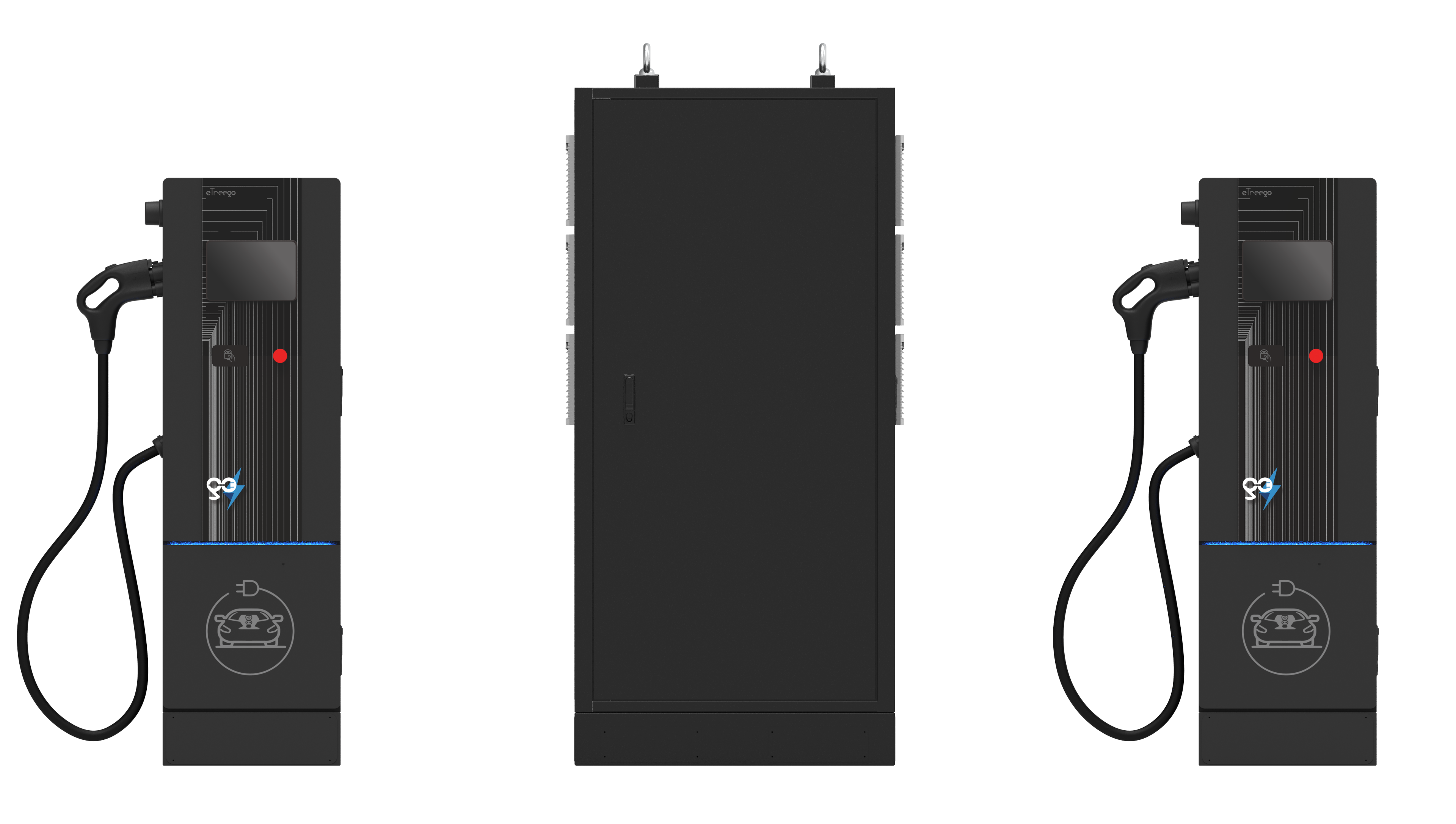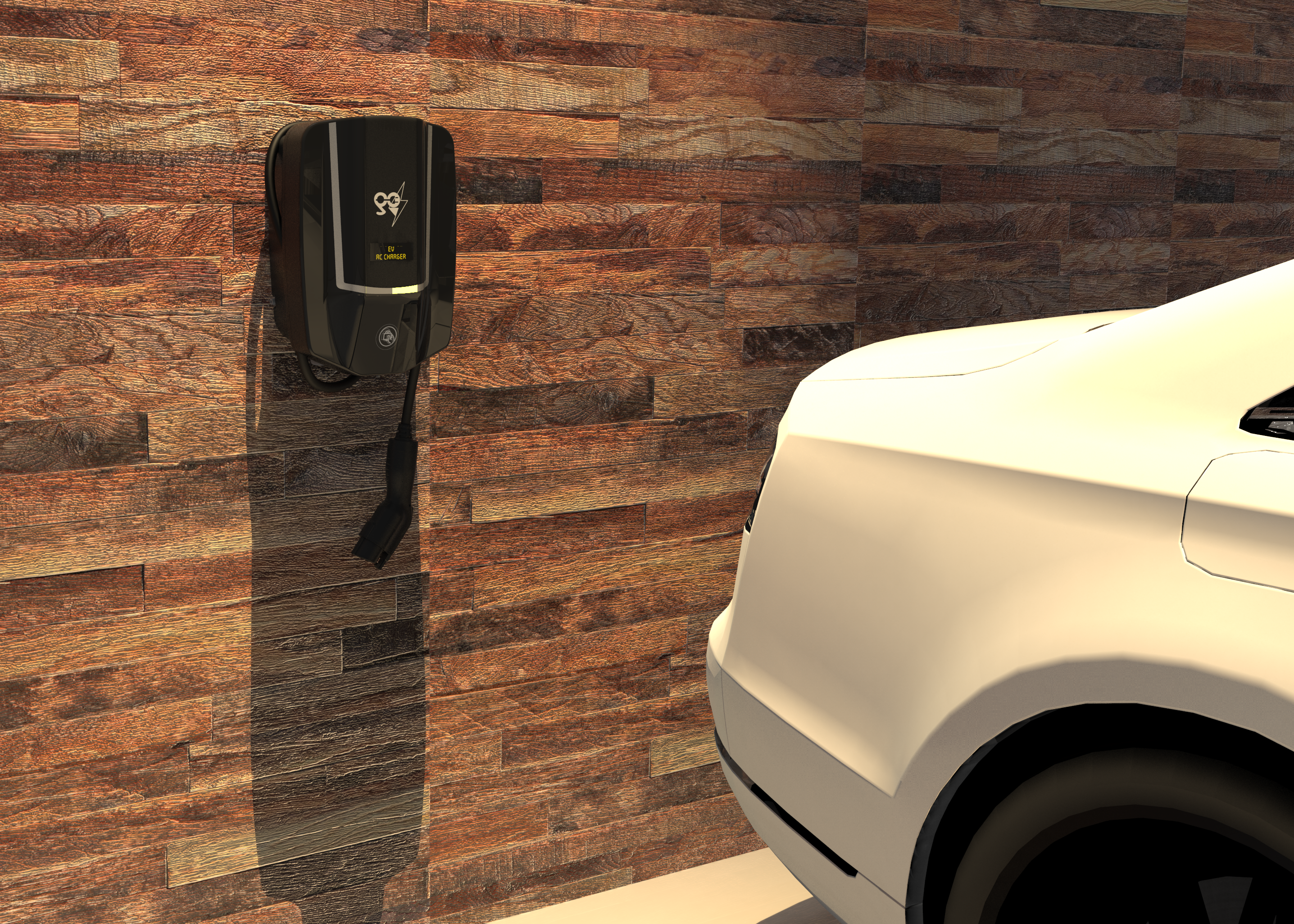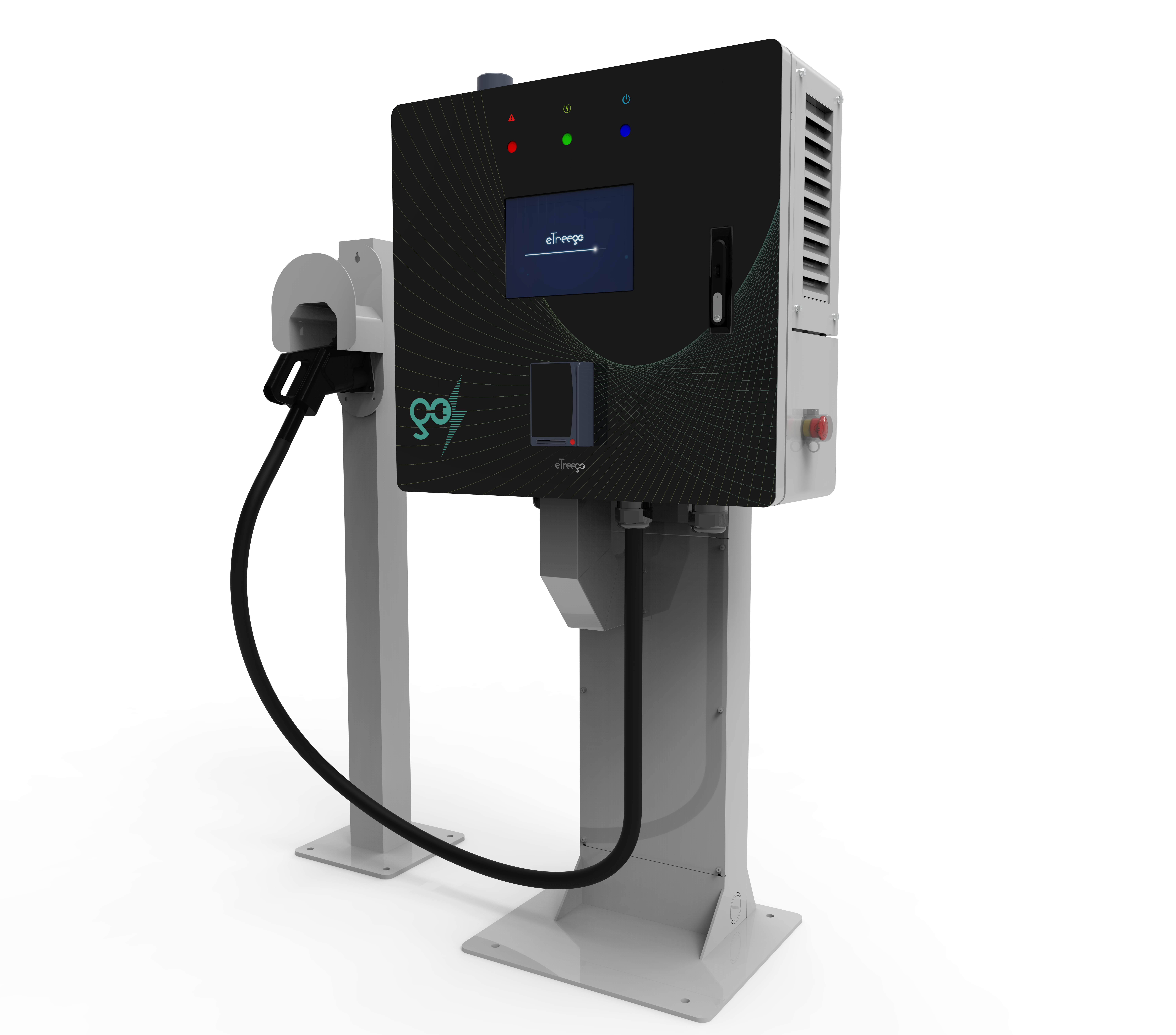EV Charger Installation Guide|Complete Overview of Charger Types, Specifications, Installation Process & Costs

Learn about EV charger types, installation methods, costs, and setup tips. Discover how to install a home EV charger and choose the right solution for your needs.
1. What Is an EV Charger? Learn About the Two Main Installation Types
An EV charger—also known as an Electric Vehicle Supply Equipment (EVSE)—is a device that delivers power to all types of electric vehicles, including battery electric vehicles (BEVs) and plug-in hybrids (PHEVs).Based on installation type, EV chargers are generally categorized into DC (Direct Current) and AC (Alternating Current) models. Each has its own features and ideal use cases. Let’s take a closer look at the key differences between them.
EV Charger Installation Type 1: DC (Direct Current) Charging

DC chargers , often referred to as fast chargers, offer higher power output—typically allowing EVs to charge up to 80% in just 20 to 30 minutes. Due to their rapid charging capabilities, they’re ideal for time-sensitive use cases.
Since DC charging systems are more complex and costly to install, they’re commonly found at highway rest stops, gas stations, and near freeway exits—making them perfect for commercial EVs. Some parking lots also offer DC chargers for quick top-up charging for everyday drivers.
- Key Features: High power output, shorter charging time, higher installation cost
- Charging Standards: CCS, NACS (formerly TPC), CHAdeMO
- Common Locations: Highway rest stops, gas stations, freeway interchanges, taxi hubs, parking lots (quick charge zones)
- 👉🏻[Learn more about DC fast chargers]
EV Charger Installation Type 2: AC (Alternating Current) Charging

AC chargers, often known as slow chargers, deliver lower power output and typically require 6 to 12 hours to fully charge a vehicle. While slower than DC fast chargers, AC chargers are more affordable to install—making them the top choice for residential use.
These chargers are also commonly found in locations where vehicles are parked for extended periods, such as hotels, shopping malls, offices, or residential buildings. This allows EV owners to conveniently charge their vehicles while working, shopping, or resting.
- Key Features: Lower power output, longer charging time, more cost-effective installation
- Charging Standards: Type 1 (J1772), Type 2 (Mennekes), NACS (formerly TPC)
- Common Locations: Homes, offices, shopping centers, hotels, parking facilities
- 👉🏻[Learn more about AC charging stations]
| Charger Type | DC (Direct Current) Charger | AC (Alternating Current) Charger |
| Common Name | Fast Charger | Slow Charger |
| Charging Power | Higher | Lower |
| Charging Time | Faster | Slower |
| Installation Cost | Higher | Lower |
| Charging Standards | CCS、NACS (formerly TPC)、CHAdeMO | Type1 (J1772)、Type2 (Mennekes)、NACS (formerly TPC) |
| Typical Location | Highway rest stops, gas stations, freeway exits, taxi hubs, quick-charge parking lots | Homes, offices, malls, hotels, parking facilities |
| Solution by eTreego | eTreego DC Chargers | eTreego AC Chargers |
What Are the Different EV Charger Specifications? Find Out More at eTreego
2. What Should You Know Before Installing an EV Charger? 2 Key Factors to Consider
Key Point 1: Choosing the Right EV Charger Installation Type
When installing an EV charger, there are typically two setup options to choose from: wall-mounted or pedestal (standalone) installation. Each type has its own suitability based on space, usage habits, and installation environment.In this section, we’ll walk you through the key differences to help you decide which configuration best fits your charging needs.
(1) Wall-Mounted EV Charger

A wall-mounted EV charger is installed directly onto a wall surface and is typically more compact in size—making it a space-saving solution ideal for residential garages, carports, or underground parking areas. This type of charger is especially popular for home use due to its simple design and efficient use of space.
(2) Pedestal EV Chargers

A pedestal EV charger is a freestanding charging unit that installs directly on the ground without relying on any building structure. This design makes it highly flexible for deployment in a variety of locations.
Due to its larger physical footprint, a pedestal charger is best suited for spacious environments such as outdoor parking lots, or open public areas, where vehicles have enough room to park and charge without obstruction.
For residential settings, where power supply is typically limited to 220V / 75A single-phase and installation space is constrained, a wall-mounted AC charger is generally more suitable. On the other hand, in public or commercial locations with fewer space and power limitations, a high-power DC pedestal charger offers faster charging performance and greater vehicle compatibility.
Step 2: Confirm the Installation Site for Your EV Charger
(1) Installing a Home EV Charger in a Single-Family House
If you live in a single-family home, the installation process is relatively straightforward. Simply have a licensed electrician assess the site for proper wiring and electrical safety. Below are three key considerations:
- Installation Requirement: Installation is allowed once a professional confirms there are no safety concerns.
- Wiring Method: The charger is typically connected from the household electrical panel (behind the main meter).
- Costs: The homeowner covers the installation cost, and electricity usage is billed under the home’s utility account.
(2) Installing an EV Charger in an Apartment or Condo Complex
For those living in condominiums or apartment buildings, additional approvals are required before installation. You must first obtain consent from the building management or homeowner association (HOA). Key points include:
- Installation Requirement: Written approval from the HOA or building committee is necessary before proceeding.
- Wiring Method: A dedicated electric meter and energy management system (EMS) are usually required for proper monitoring and billing.
- Costs: Installation expenses are typically shared by residents, while each user pays individually for their charging usage.
Want to learn more about our EV chargers? Discover the details at eTreego!
3. Is Installing a Home EV Charger Difficult? Here’s a Quick Guide.
Installing a home EV charger is easier than you might think. With the help of experienced professionals, the process starts with a precise site assessment to determine the best installation location. Combined with a high-quality, stable EV charger and expert setup, you can enjoy safe, reliable, and hassle-free charging at home.
Let’s dive in and walk through the simple steps of a professional home EV charger installation!

Step 1: Pre-Installation Preparation
(1) On-Site Evaluation by a Licensed Technician
Before installing an EV charger, users should schedule an on-site inspection with a certified electrician or installer. This assessment evaluates the safety of the installation site, checks the power connection options, and determines the optimal layout for the charger.
(2) Confirming the Installation Plan
Once the site is confirmed to meet installation requirements, the installer will provide a detailed proposal and quote. This ensures the user fully understands the installation process, technical scope, and cost breakdown.
(3) Applying for Power Access via Taipower
In Taiwan, applying for grid access through Taipower is a necessary step. The installer will assist in submitting the application. Taipower personnel will conduct a field inspection to evaluate electrical safety and load capacity.
(4) Community Approval
According to the Apartment Building Management Act , if the EV charger is to be installed in a shared residential complex, users must first obtain written consent from the homeowners’ association and management committee. Only after approval can installation proceed.
If the installation is for a standalone home, this step is not required, and installation can move forward directly.
Step 2: Installation & Completion
(1)Installation Work
The EV charger installation process typically consists of three key stages:
- Setting up the sub-panel and wiring
- Installing the EV charger unit
- Conducting a charging test
Once all tests are successfully completed and the system is verified to be functioning correctly, the process can move on to the final step.
(2) Submitting Completion Report to Taipower
Before activating the charger, the equipment must pass VPC (Voluntary Product Certification) — a required safety and compliance certificate for EV charging products in Taiwan.
After the installation is completed, the installer will assist the user in submitting a completion report to Taipower to verify that the project meets all technical and regulatory standards. Once the report is reviewed and approved, the EV charger can be officially activated and used.
4. How Much Does It Cost to Install a Home EV Charger? A Breakdown of Installation Expenses
EV charger installation costs can vary depending on the setup. Many people wonder:
“How is the cost of a home EV charger calculated?” or
“What’s included in the installation fee?”
To help you better understand the pricing structure, we've outlined the most common components involved in home EV charger installation costs, giving you a clearer picture before you begin.

The total cost of installing a home EV charger typically includes the following components:
- Site Survey Fee: This covers the cost of sending a certified technician to inspect the site and assess the installation feasibility.
- Equipment & Materials: This includes the EV charger unit, power cables, charging connectors, communication modules, and other accessories. Prices vary depending on the brand, model, and specifications.
- Installation Labor: This covers the electrical wiring, sub-panel setup, charger mounting, and testing. The fee may vary based on the complexity of the site.
- System Configuration: Includes the setup of the Energy Management System (EMS) and configuration of the EV charger.
- Taipower Completion Report Processing: Installers typically handle the submission process to Taipower, including drawings, paperwork, and documentation. Charges vary by installer—please contact your service provider for an exact quote.
To get an accurate quote and installation plan, please consult your vehicle manufacturer and an authorized installation provider in advance.
5. EV Charger Installation FAQs: Wiring, Time, Warranty & Maintenance
(1) How is a Home EV Charger Connected to the Meter?
The type of residence determines the electrical wiring method and charger setup. There are two typical scenarios:
- Standalone House: The charger is connected directly from the main household meter via back-end wiring and distribution.
- Apartment or Condo: A dedicated electric meter and EMS (Energy Management System) are usually required for the charger to ensure energy safety and centralized management.
(2) How Long Does EV Charger Installation Take?
Most residential EV charger installations can be completed within 1 to 2 working days. However, the actual time may vary depending on the site's conditions and the installer’s scheduling or project complexity.
(3) What’s the Warranty Period for an EV Charger?
Most EV chargers come with a warranty of 18 to 24 months, depending on the brand and manufacturer. For more details about warranty coverage or specific product support, it’s best to contact your charger provider directly.
(4) How Often Should an AC Charger Be Maintained?
To ensure safe and stable operation, AC chargers should be inspected 1 to 2 times per year by professionals.
For daily maintenance, we recommend users check the cable and charging connector every quarter to make sure there are no abnormalities, wear, or debris. Regular upkeep helps prolong equipment lifespan and ensures safe usage.
6.Looking for a High-Quality EV Charger? eTreego is Trusted by EV Owners.
Want the convenience of charging your EV at home? A home EV charger is the ideal solution. Even if it’s your first time installing one, eTreego offers a wide range of premium chargers to help you easily understand and select the right model.
Why Choose eTreego? Here Are 3 Key Advantages:
- Experienced Engineering Team: With deep roots in the EV industry, our team brings expertise in charging systems , motor control, vehicle integration, and battery management, delivering solid technical support.
- Comprehensive Charging Solutions: Whether it's 2-wheelers, 4-wheelers, or even 8-wheel electric vehicles, we provide complete charging equipment and smart energy management systems tailored to different environments and business needs.
- Strong Industry Partnerships: We proudly collaborate with trusted names like Shihlin Electric and Hotai Motor, ensuring top-quality service, equipment reliability, and future-proof technology.
Whether you're looking for AC or DC chargers, or wall-mounted or pedestal chargers, you'll find the perfect match at eTreego.
We invite all EV drivers and businesses to visit the eTreego official website to learn more about our professional, high-performance EV charging products.
Explore your tailored charging solution today — and make every journey smarter and easier.
Professional & Reliable EV Chargers – eTreego